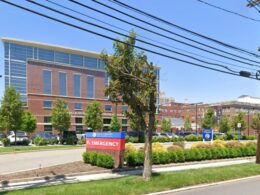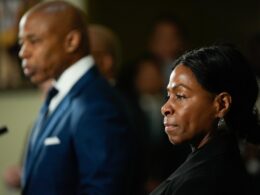New York City remains the economic engine of the state, and staying competitive in a rapidly evolving global marketplace requires consistent, forward-thinking investment in infrastructure — especially energy.
As we work to solidify our post-COVID recovery and strengthen job growth, it’s critical that we address the factors that may hinder momentum. Tariffs, political unpredictability, and broader economic uncertainty have introduced new challenges, and recent job losses across the city underscore the importance of securing the foundational elements that support economic resilience.
At the same time, recent warnings that the literal power our businesses run on is in danger of running short should rattle officials into action. Recent heatwaves have given us a glimpse of the power grid’s true vulnerabilities. Oppressive temperatures have smashed records and resulted in outages across New York, prompting the state to urge New Yorkers to conserve power, utility providers to voluntarily reduce voltage and the New York Independent System Operator, which runs the state’s power grid, to issue energy watches and warnings akin to a tornado siren.
For the sake of our economy, public safety and basic daily life, we cannot allow this to become the norm. Businesses and residences alike must be able to tap into multiple reliable sources of energy — including traditional sources like natural gas as renewables are slowly built up — and not be forced to navigate the uncertainty that would come from choking off the power.
Traditional fuels consistently provided about two-thirds of the power needed to keep the air-conditioning humming and the lights on at peak demand during this extreme heat. Wind and other renewables barely cracked double digits, while hydro and nuclear power constituted nearly 30%.
Even on mild days, our gas and electric systems are taxed, and New York City does not yet have the clean, renewable power that advocates insist can power a fully electrified future.
As New York State emerges as a heavyweight in the high-tech manufacturing and generative artificial intelligence fields, New York City will be in line to reap plenty of benefits from projects built upstate or on Long Island. But that progress is not possible without ample power.
We’re nearing a tipping point when electricity supply won’t meet growing demand — which is projected to double over the next two decades — as the renewable power sources necessary to wean us off fossil fuels haven’t scaled up fast enough, NYISO warned.
Without adequate electrons and gas, turning New York into a City of Yes and driving forward significant projects simply won’t be feasible. Reliable energy is essential to deliver massive housing development on Staten Island’s North Shore, remake the blighted industrial Willets Point area, and transform the Brooklyn Marine Terminal.
We’re buoyed by recent news that Gov. Hochul has directed the New York Power Authority to build a zero-emission nuclear power plant, and is clear-eyed about how a lack of reliable, affordable power will jeopardize the pro-business climate her administration has been working to foster.
Forward-thinking strategies like National Grid’s recent updates to its long-term gas plan to account for new natural gas supply is also the kind of signal we need as business representatives that energy will remain available. It’s an approach that must be supported by the state and other key stakeholders invested in building a more affordable, sustainable, and dynamic New York.
Those who oppose pragmatic infrastructure decisions, including new gas pipelines, are not being realistic about the state of energy today. Ignoring the real reliability risks we face will only set our city and state back decades. We need leaders to be resolute in their decision making and not delay efforts to build for the future.
Baran, Grech, and Peers are leaders in the Five-Borough Chamber Alliance, and serve as the respective presidents of the Staten Island, Queens, and Brooklyn Chambers of Commerce, representing more than 100,000 small businesses throughout New York City.








